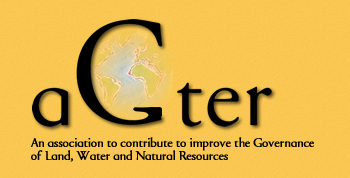|
|
|||||||||||||||
|
|
Ce dossier, élaboré en collaboration avec un groupe de travail ad hoc au sein d’AGTER, se propose de présenter les mesures les plus significatives et les instruments originaux qui ont été conçus dans le cadre de la politique foncière rurale appliquée en France après 1945, ainsi que ses acteurs les plus emblématiques. Sans prétendre à l’exhaustivité, il se concentre volontairement sur les mesures en faveur de la mise en valeur productive des espaces ruraux par l’agriculture et sur les questions d’accès et de répartition du foncier agricole. Les enjeux environnementaux, les questions relatives à la protection du foncier rural, aux autres usages de l’espace et à l’articulation entre politiques foncières urbaines, rurales et agricoles – enjeux qui se posent aujourd’hui avec grande acuité – ne seront pas traitées en détail dans le présent dossier, mais feront l’objet d’un dossier spécifique.
A presentation of the Land Office (Office Foncier), central piece of the innovative system imagined by Edgard Pisani, former Minister of Agriculture in France in the 1960s, to improve the management of agricultural lands. Pisani’s land project was part of the program of the Socialist Party for the elections of 1981, but once the Left came to power, it was quickly abandoned. While some practical arrangements may now seem to have aged a bit, his proposals are still overall of remarkable relevance.
[*An important matter for many countries: making land use rights secure*]
In France, there is a system for regulating the land market that relies on the collaboration of the State and farmers’ organisations. This system, little known outside of this country’s borders, is called the Land Development and Rural Settlement Associations (Sociétés d’Aménagement Foncier et d’Etablissement Rural, SAFERs) and constitutes one of the key components of French "structures policy”. Under this “structures policy” umbrella falls not only all the policies for agricultural modernisation, (...)
[*Context: A long, symbolic and victorious peasant struggle*]
|
||||||||||||||||||||
AGTER. Addres: 45 bis, avenue de la Belle Gabrielle, 94736 NOGENT SUR MARNE CEDEX, FRANCE
Telephone: +33(0)1 43 94 72 59 / +33(0)1 43 94 72 96
E-mail: agter@agter.org







